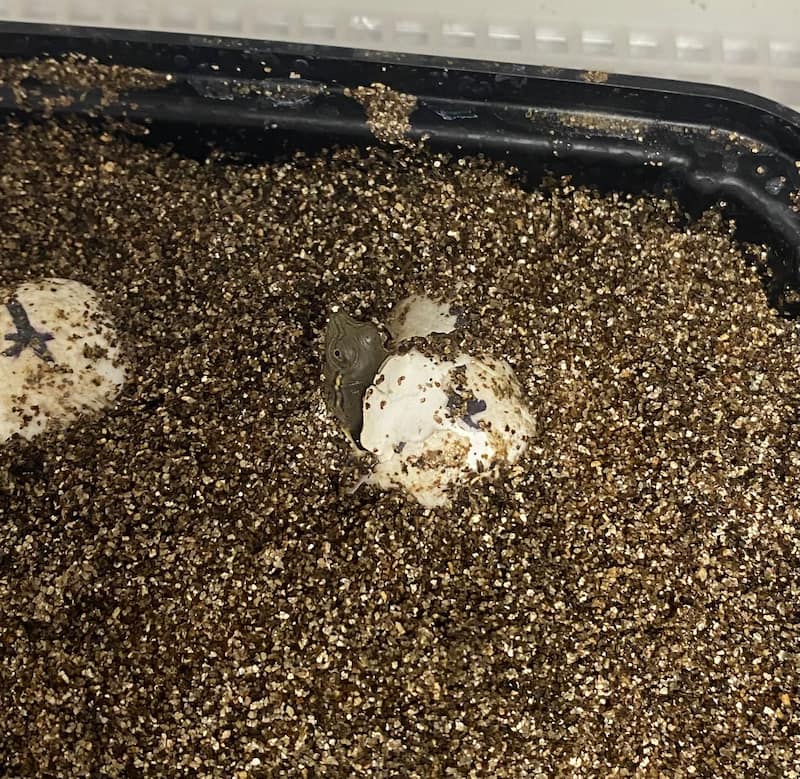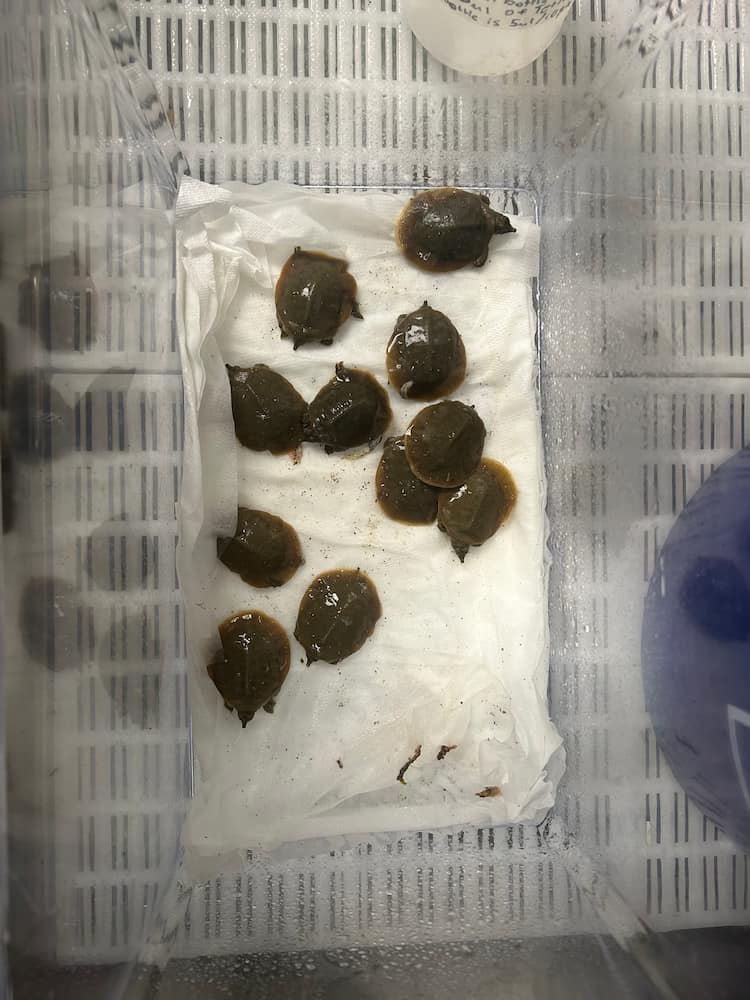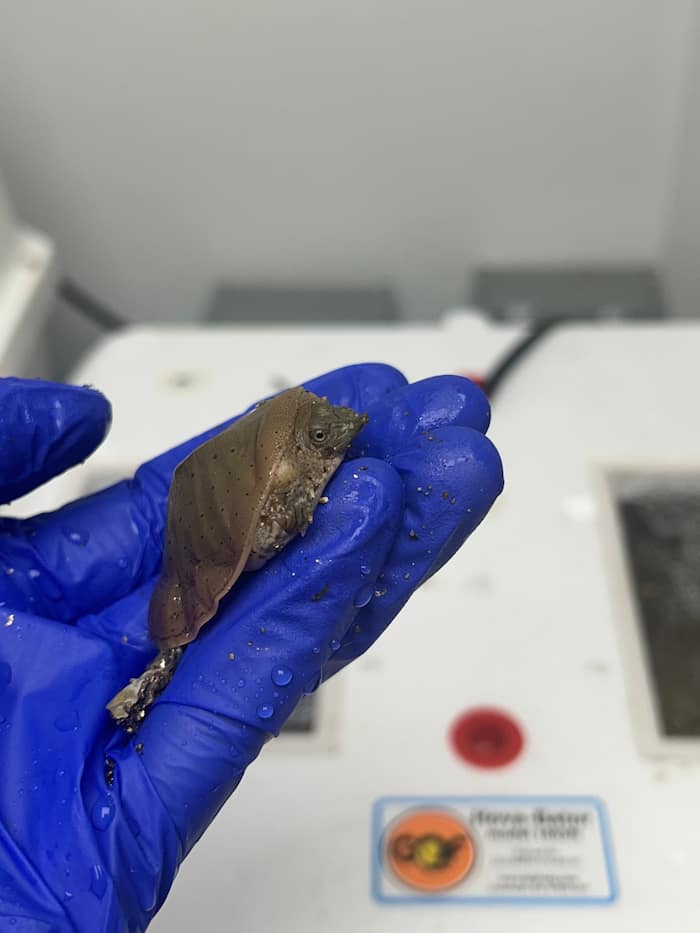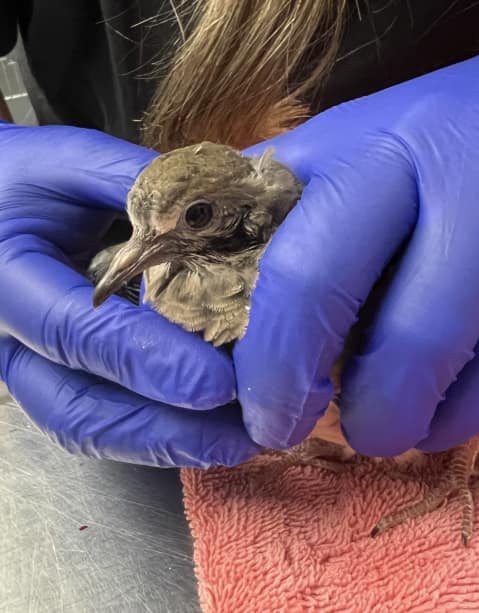Spiny Softshell Basics
Spiny Softshell Turtles are considered one of the largest freshwater turtle species within the United States. Their unique appearance makes them stand out among other turtle species. As their name suggests, their carapace, or top shell, is flat, flexible, and has spines along the front surface. Their webbed feet and long nose enable these turtles to spend most of their time in the water, either swimming or remaining submerged for extended periods. A typical hunting strategy of this species involves ambushing the prey. They accomplish this by burying themselves in the soil or mud and waiting for food items to swim by. They are generally carnivorous, eating fish, invertebrates, or insects as they see fit.
Arrival to the Wildlife Medical Clinic

On July 22, 2025, a good samaritan presented 18 spiny softshell eggs to the Wildlife Medical Clinic after being found at a construction site. Due to the possibility of the eggs being destroyed during construction, they were not returned to where they were found. The eggs were promptly placed in an incubator with temperature and humidity monitoring but were also monitored daily by our staff and volunteers. We candled the eggs to check viability. This is when you carefully put a light source up to the egg to check for signs that the egg is developing, such as blood vessels. This is a delicate process, as rotating the egg could cause damage to the developing embryo. Reptile eggs, unlike bird eggs, do not need rotated during incubation. After weeks of monitoring, on September 2, our staff and volunteers celebrated as three turtles hatched from their eggs. As the days went on, more turtles emerged, with a total of twelve turtles successfully hatching!
Hatchling Care

As our turtles emerged from their eggs, we kept them contained inside an incubator with damp cloth and misted them daily. We did not immediately move them into a larger enclosure, as freshly hatched turtles have a fragile yolk sac that will absorb over a few days post-hatching. To ensure the yolk sac did not break, the turtles were not handled unless necessary and were kept in a well-controlled environment until the sac was absorbed. Once the yolk sac was absorbed, we moved the turtles into an aquarium with substrate that allowed them to burrow, vegetation to hide in, basking spots to warm up under, and appropriate lighting. The turtles were offered a variety of food options like shrimp, bloodworms, and small feeder fish. We continued to monitor the turtles daily, observing their food intake, water quality, and overall behavior. We just needed to ensure they were healthy and eating before we released them back into the wild.
Release

Once our staff veterinarian gave them a clean bill of health, they were approved for release. We had to strategically choose a location to release them, as we could not return them to the construction site they came from. We chose a release site directly into the lake next to which their eggs were found. On September 14, after confirming a proper release site, the turtles were released back into the wild. Our team is incredibly grateful to have had this opportunity to care for these turtles from the incubator to release and hope they have a long, happy life in the wild!
You can see footage of their release on our Facebook page at https://www.facebook.com/share/r/1FxPqwULpr.
Written By: Riley D., Class of 2027




